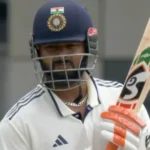India’s Football Journey: AFC Asian Cup Qualifiers and the Blue Tigers
The smell of damp earth, the roar of a crowd that seems to vibrate in your chest, the flash of blue jerseys – these are the things that come back to me whenever I think about Indian football. It’s a feeling I got intimately familiar with spending over a decade working within the Indian football ecosystem, initially as a youth coach, then a scout for several I-League and ISL teams, and finally, for the past five years, as an analyst offering insights for national team preparations. I’ve seen the hopeful faces of kids dreaming of the Asian Cup, the frustration of near misses, and now, thankfully, the growing confidence of a team finally starting to believe. It hasn’t been a straight line, not by a long shot, and what we’ve witnessed recently with the AFC Asian Cup qualifiers is a testament to a lot of hard work, strategic shifts, and a whole lot of grit.
I’m going to lay out for you what it’s *actually* been like following this journey, digging into the complexities of the qualifiers, what makes this current “Blue Tigers” squad special, and where we realistically stand to go from here. Forget the headlines – I want to give you the inside scoop from someone who’s been in the trenches.
The Long Road to Qualification: More Than Just Three Games
When people talk about the “Asian Cup Qualifiers,” it sounds simple, doesn’t it? Three games, win, and you’re in. But believe me, behind those 90 minutes on the pitch is a year-round process of scouting, planning, and trying to build a team that can take on the best in Asia. For years, qualifying for the Asian Cup was something India *hoped* for, not expected. We’d often rely on luck, a favorable draw, or a moment of individual brilliance. That’s changed.
The format for the 2023 (played in 2024) qualifiers was different. With the expansion of the Asian Cup to 24 teams, the qualification process became a little less cutthroat, but it still demanded consistency. We were in Group D, alongside Afghanistan, Hong Kong, and Cambodia. On paper, it looked manageable, but anyone who’s spent time in Asian football knows that ‘on paper’ means next to nothing. Afghanistan, despite the well-documented difficulties within their football association, always bring intensity and physicality. Hong Kong, historically, have been tactically astute and tough to break down, consistently punching above their weight. And Cambodia, while developing, were becoming increasingly organized.
What I saw in the build-up to those qualifiers was a shift in approach from the national team setup. Previous campaigns often felt reactive – trying to patch together a team based on current form, with limited time for genuine tactical integration. This time, there was a noticeable emphasis on identifying a core group of players and building a system *around* their strengths. I’ve been fortunate enough to witness some of the behind-the-scenes work, analyzing opponent’s game tapes, and the coaching staff – led by Igor Štimac – were meticulous. They weren’t just looking at what players *could* do, but how they fit into a specific tactical framework.
One of the biggest lessons learned from previous failures was the need to be adaptable. Indian football has historically been about individual skill, but Asian football is becoming increasingly tactical. We needed to be able to switch formations, adjust our pressing strategy, and exploit opponents’ weaknesses. Štimac brought in that tactical flexibility. He understood that relying on one plan would be a recipe for disaster.
The qualifiers themselves were a rollercoaster. The first game against Cambodia was surprisingly tricky. We won 2-0, but it wasn’t a dominant performance. It revealed some nerves within the team, a hesitancy to take risks. The goalscorers, Sunil Chhetri and Suresh Wangjam, were vital, but the overall performance lacked the fluidity we’d been aiming for in training.
Hong Kong was where things started to click. A 4-0 win. It wasn’t just the scoreline, but *how* we won. The midfield, marshalled by Anirudh Thapa and Brandon Fernandes, controlled the tempo. Sunil was his usual self – pulling defenders apart and finishing with clinical precision – but the support cast was equally impressive. Liston Colaco, with his pace and direct running, caused havoc down the wings, and the defense looked solid and organized. This game, for me, was a turning point. It showed that this team wasn’t just relying on Chhetri; it had other players capable of stepping up and delivering.
The final game against Afghanistan was a pressure cooker. A draw would have been enough, but knowing Afghanistan’s fighting spirit, we knew it wouldn’t be easy. The match ended 1-1, but the way India managed the game, absorbing pressure and staying composed, was hugely encouraging. It showed a newfound mental resilience, something that had been lacking in previous generations.
That qualification wasn’t simply about securing a spot in the Asian Cup. It was about building belief, about proving to ourselves that we could compete with the best in Asia.
The “Blue Tigers”: A Generation Taking Shape
Let’s talk about the players. The term “Blue Tigers” has become synonymous with the national team, and for good reason. This isn’t just a collection of individuals; it’s a group that’s starting to develop a real identity. And central to that identity is, inevitably, Sunil Chhetri.
Let’s be real – Sunil isn’t getting any younger. But even at his age, he remains a talisman, a leader, and a goalscoring threat. He’s a player who genuinely cares about the national team and sets the standard for commitment and professionalism. He’s also incredibly intelligent on the pitch, knowing when to drop deep, when to make a run, and when to bring others into play. I’ve spoken to opponents who openly admit they dread facing him – not just because of his finishing ability, but because of his sheer determination.
But what’s exciting is that we’re no longer solely reliant on Sunil. A new generation of players is emerging, and they’re starting to shoulder the responsibility. Players like Liston Colaco, who I mentioned earlier, have added a much-needed attacking dimension with his speed and trickery. Suresh Wangjam, a tireless midfielder, provides energy and defensive stability. Anirudh Thapa is a classy passer of the ball, capable of unlocking defenses with his vision. And then you have the emerging talents like Vikram Partap Singh and Ishan Pandita, who are eager to make their mark.
What sets this generation apart is their willingness to learn and adapt. They’re not afraid to embrace new tactics, to work hard on their fitness, and to push each other to improve. I’ve seen it firsthand in training sessions – a genuine desire to get better and a healthy competitive spirit.
I’ve also noticed a growing sense of unity within the squad. There’s a real camaraderie, a feeling that they’re all fighting for the same goal. This is partly due to the coaching staff, who have done a great job of fostering a positive and inclusive environment. But it’s also down to the players themselves, who have embraced each other and formed strong bonds.
The defensive unit has also strengthened considerably. Sandesh Jhingan, our experienced center-back, remains a rock at the back. He’s a commanding presence in the air and a strong tackler. He’s also a natural leader, organizing the defense and keeping things tight. Alongside him, players like Rahul Bheke and Mehtab Singh are providing competition for places and adding depth to the squad. The goalkeeper situation is looking good too, with Gurpreet Singh Sandhu establishing himself as the number one. He’s a reliable shot-stopper and a good communicator.
The Tactical Evolution: What’s Different Now?
For a long time, Indian football was characterized by a direct style of play – getting the ball forward quickly and hoping for the best. While that approach could be effective at times, it was often predictable and lacked creativity. Štimac has brought in a more possession-based approach, encouraging players to keep the ball and build attacks patiently.
This isn’t about trying to imitate European or South American styles. It’s about adapting to the strengths of our players and finding a system that suits our game. We have technically gifted players who are comfortable on the ball, and we need to give them the freedom to express themselves. The emphasis is now on building from the back, playing through the midfield, and creating opportunities in the final third.
Another key tactical change has been the use of a flexible formation. Štimac isn’t afraid to switch between a 4-3-3, a 4-2-3-1, and even a 3-5-2, depending on the opponent and the situation. This makes us more difficult to predict and allows us to exploit different areas of the pitch.
The pressing game has also been revamped. Previously, our pressing was often disjointed and uncoordinated. Now, it’s more organized and aggressive, aiming to win the ball back high up the pitch and create scoring opportunities. This requires a lot of hard work and discipline, but the players have bought into it.
However, transitioning to a more possession-based game isn’t without its challenges. One of the biggest is the quality of passing. We need to improve our accuracy and tempo of passing if we want to compete with the best teams in Asia. We also need to be more clinical in the final third. Creating chances is one thing, but converting them is another. The strikers need to be more decisive and take their opportunities when they come.
Beyond the tactics, what I’ve observed is a smarter approach to set-pieces. We’ve invested time analyzing opponent’s weaknesses and creating routines that maximize our chances of scoring. This has paid dividends in recent matches, with several goals coming from set-pieces.
The ISL and I-League: The Foundation for National Team Success
The Indian Super League (ISL) and the I-League are often seen as rivals, but they’re both crucial to the development of Indian football. And the recent restructuring – aiming for a unified league system – is something I wholeheartedly support. For years, the fractured nature of Indian club football hindered the progress of the national team. Players were often stuck in under-competitive leagues, lacking the opportunity to test themselves against quality opposition.
The ISL, with its higher budgets and foreign players, has undoubtedly raised the standard of play. It’s given Indian players the chance to train and compete alongside some of the best players in Asia. It has also improved the infrastructure and professionalism of Indian football.
However, the I-League still plays a vital role. It’s the breeding ground for young talent, providing opportunities for players to develop and gain experience. Many of the players who are now starring for the national team came through the I-League system. The I-League also has a strong grassroots base, with several clubs investing in youth academies.
The key now is to integrate the ISL and the I-League more effectively. The proposed unified league will create a more competitive and sustainable football ecosystem. It will also provide a clearer pathway for young players to progress from the youth academies to the professional ranks and ultimately to the national team.
I’ve spent a lot of time scouting players in both leagues, and I’ve been impressed by the quality of talent that’s emerging. There are a lot of promising youngsters who have the potential to become future stars for the national team. But they need to be given opportunities to play regularly and to develop their skills. And that’s where a unified league system can make a real difference.
The Challenges Ahead: Real Talk About Where India Stands
Okay, let’s be realistic. Qualifying for the Asian Cup is a fantastic achievement, but it’s just the first step. We’re still a long way from being a major force in Asian football. There are several challenges we need to address if we want to continue to progress.
One of the biggest is the lack of depth in the squad. We have a core group of talented players, but we need to develop more players who can compete at the international level. This means investing in youth development, providing better coaching at the grassroots level, and creating more opportunities for young players to play regularly.
Another challenge is the physicality of Asian football. Many Asian teams are physically stronger and more aggressive than India. We need to improve our physical conditioning and our ability to compete in aerial duels and tackles.
We also need to improve our mental toughness. Indian football has historically been prone to collapses under pressure. We need to develop a more resilient mentality and learn to handle the pressure of big matches.
The infrastructure also needs improvement. While the ISL has brought in better stadiums and training facilities, a lot of the smaller clubs are still struggling with inadequate infrastructure.
And honestly, the scouting network needs further refinement. We need to have eyes *everywhere* – not just in the ISL and I-League, but in smaller leagues, academies, and even abroad. Identifying hidden gems is crucial for building a sustainable national team program.
But despite these challenges, I’m optimistic about the future of Indian football. The recent progress is undeniable. The players are more talented, more tactically aware, and more determined than ever before. The coaching staff is doing a great job of building a cohesive team. And the fans are starting to believe again.
Looking Forward: The Asian Cup and Beyond
The Asian Cup itself, in Qatar in early 2024, will be a huge test for the Blue Tigers. We’re grouped with Australia, Uzbekistan, and Syria – a tough draw, but not insurmountable. Australia, consistently ranked high in Asia, will be the favorites. Uzbekistan is a well-organized and disciplined team, known for its defensive solidity. Syria is a tricky opponent, with a history of causing upsets.
Our goal in the Asian Cup should be to be competitive in every match. We need to show that we can go toe-to-toe with the best teams in Asia. A realistic target would be to reach the knockout stages. But even if we don’t achieve that, we can still make a statement. We can show the world that Indian football is on the rise.
Beyond the Asian Cup, we need to continue to invest in youth development, improve our infrastructure, and strengthen our scouting network. We need to create a sustainable football ecosystem that can produce a steady stream of talented players.
I genuinely believe that Indian football has the potential to become a major force in Asia. We have a passionate fanbase, a growing economy, and a talented pool of players. But it will require a continued commitment to development, a willingness to embrace change, and a whole lot of hard work.
I’ve dedicated over a decade of my life to this sport in India, and I’ve seen the highs and lows. But through it all, I’ve remained a believer. I believe in the potential of Indian football. I believe in the Blue Tigers. And I believe that the best is yet to come.
This journey isn’t just about wins and losses. It’s about inspiring a generation, about creating a sense of national pride, and about showing the world what Indian football is capable of. And that, to me, is what makes it all worthwhile. The beautiful game deserves the fervent support and continued development it is finally beginning to receive in India, and I’m excited to see what the future holds for the Blue Tigers.
Anurag Dhole is a seasoned journalist and content writer with a passion for delivering timely, accurate, and engaging stories. With over 8 years of experience in digital media, she covers a wide range of topics—from breaking news and politics to business insights and cultural trends. Jane's writing style blends clarity with depth, aiming to inform and inspire readers in a fast-paced media landscape. When she’s not chasing stories, she’s likely reading investigative features or exploring local cafés for her next writing spot.






